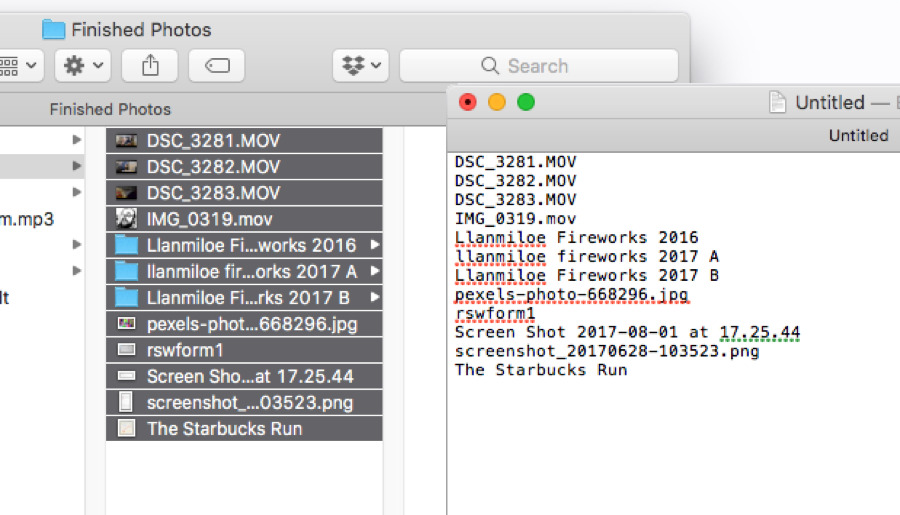
If mapping of the GID, primary GID, and UID is disabled, the Active Directory connector generates a GID, primary GID, and UID based on Active Directory’s standard GUID attribute. Primary GID to the PrimaryGroupID attribute If the Active Directory administrator manually extends the Active Directory schema to include the macOS gidNumber, PrimaryGroupID, and UniqueID attributes, you can map the following:
#MAC OS LIST FILE ATTRIBUTE MAC OS#
From the command line, Mac OS X’s ACL implementation provides more than a dozen unique privilege attribute types and lets you define each as a specific allow or deny rule. If the Active Directory administrator manually extends the Active Directory schema to include RFC 2307 attributes, you can map the following: As you can see from the list above, with the exception of the first OS X beta, all versions of the Mac operating system from 2001 to 2012 were all named after big cats. Right - xattr -l or ls -l from the command line, or xattr.lisxtattr() in Python, will give you a list of all of the extended attributes of the file. Every file and folder on the system can have an unlimited list of ACE rules, hence the list in ACLs. Primary GID to the msSFU-30-Gid-Number attribute If the Active Directory administrator extends the Active Directory schema by installing Microsoft’s Services for UNIX, you can map the following: Usually, the Active Directory schema must be extended to include an attribute that’s suitable for mapping to the GID, primary GID, and UID:

On a computer that’s configured to use Directory Utility’s Active Directory connector, you can specify an Active Directory attribute to map to the group ID (GID), primary group ID (GID), and unique user ID (UID) attribute in macOS.

Step 2: Check the OS Version checkbox and set the operation field to be equal to () or not equal to () the Windows, Mac, or Linux operating system you set in the OS Version list box. Map the group ID, Primary GID, and UID to an Active Directory attribute in Directory Utility on Mac Mac OS X: Print or Save a List of File Names. In the Endpoint Attribute Type list box, choose Operating System.


 0 kommentar(er)
0 kommentar(er)
